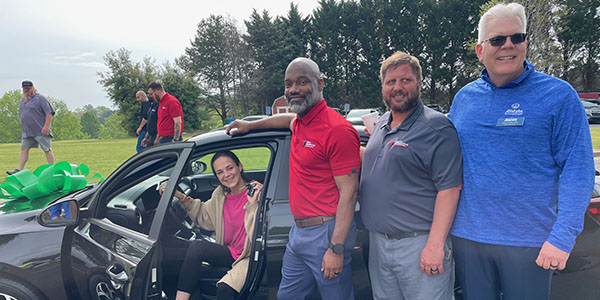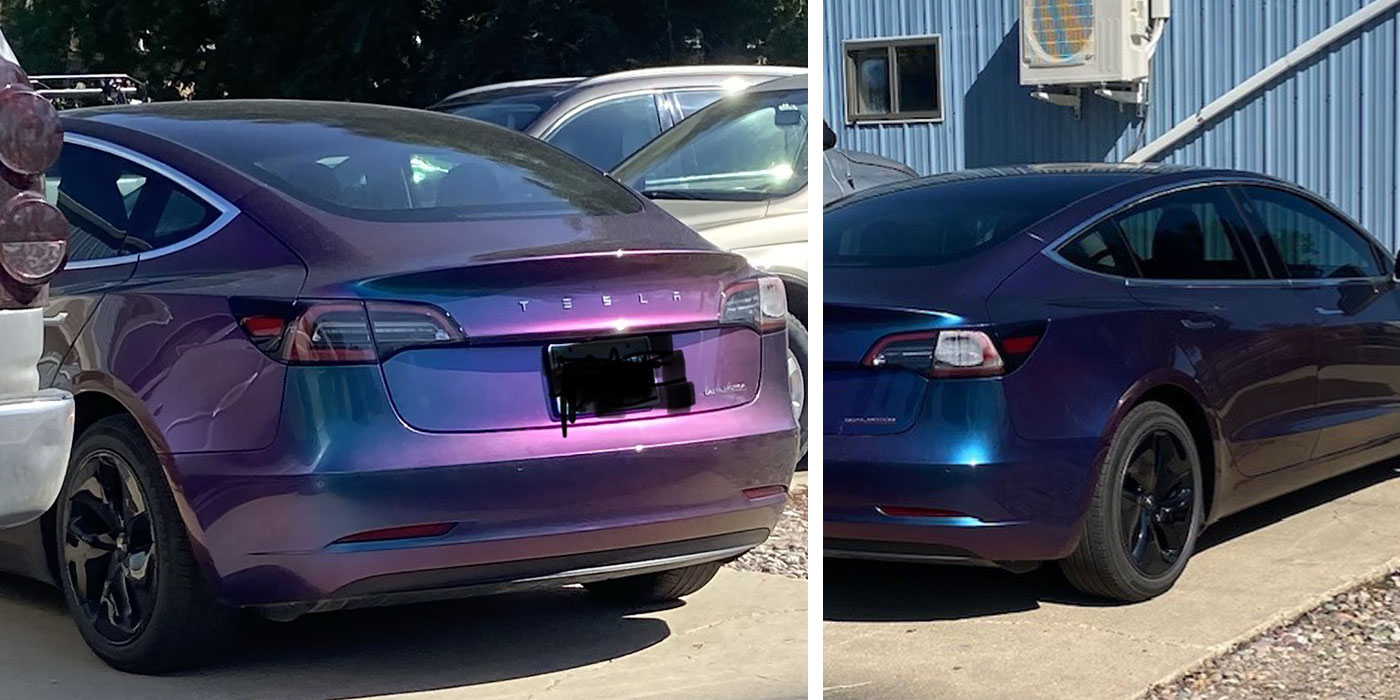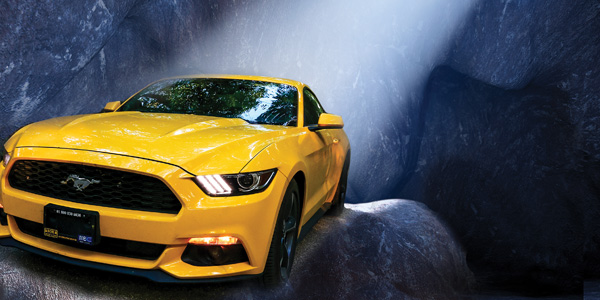
The holy grail of the paint shop is a job so clean we refer to it as a “no-buffer.” Some might argue color match is the grail, but I submit that proper color match has fewer variables that can go wrong, certainly fewer of the ones we seemingly can’t control. No, a dirt-free paint job – a no-buffer – is the holy grail, and we don’t achieve it by hope and prayer.
So just how do we achieve it? What can we control and what can we only hope to control? We’ll start with addressing common and predictable dirt sources, and wrap up with “acts of God” (for lack of a better phrase), some of which aren’t even considered “dirt” but require buffing and/or repaint as a matter of recourse.
The Vehicle
Certainly the vehicle can be a source of dirty contamination, but less so these days as more and more painters are painting parts off the car. Even blend panels are being removed in some shops, which often allows us to load the booth with two “cars” at the same time – something that is impossible if blend panels are still on the vehicle. However, a blend or repaired panel that has been taken off the vehicle for refinishing purposes can still bring many of the filthy nuances of the vehicle itself into the booth with us, so this is a case for a couple of fundamentals:
- Cleaning. From the pre-wash to proper final cleaning, blowing and tacking.
- Masking. A repair or blend panel removed from a vehicle may well have filthy jambs that you need to mask in order to effectively isolate the exterior of the panel from the dirty jamb.
Plastic parts such as bumper covers create a unique challenge in that static electricity will build as the part is cleaned and wiped. This is a greater challenge when humidity is low, but is always a factor to address. There are several anti-static wipes and solvents to address this problem, but still, the very act of wiping will create some degree of static in the plastic. The only way I know to eliminate this is with an anti-static gun. These tools neutralize positive and negative ions that not only help us with our static-caused dirt problems but also assist in metallic behavior, which can also be affected by static electricity.
The Booth
Even a properly maintained booth can yield dirty paint jobs, and incredibly, an old neglected “cave” can produce a clean paint job. What gives? We need to determine whether the dirty paint jobs suddenly cropped up, or does this booth always produce dirty work? If the booth always produces dirty work, I’m going to be suspicious of the painter’s habits, but I’ll play along and blame the booth.
There are desired conditions to be sure, for example, clean filters – all of them. Floor and ceiling filters are the obvious ones, but your booth may have serviceable plenum filters and even pre-filters at the point of intake. We also know we generally want slightly positive cabin pressure when we’re spraying – is your booth self-adjusting or do you adjust the dampers manually? The adjustment needs to change as the filters load with dirt (intake) or overspray (exhaust) and CFM (cubic feet per minute) is choked down.
We also look for dirt intrusion in seams and joints of the interior booth walls – places where air is being sucked into the cabin through the wall rather than running through the intake filter, identifiable by the black-funnel-shaped dirt applique that shows up, often noticed for the first time after pressure washing and painting the booth cabin.
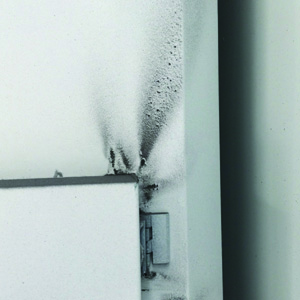
Another source of dust/dirt in the cabin is leaving the doors open without the booth running. Any dust that floats through the paint shop near the open doors of a downdraft booth will be magically attracted to the ceiling filters, which have been statically charged due to the friction of air running through them. There it will remain until the booth is turned back on, and then will likely ride in pockets of turbulence until it’s sucked out by the exhaust filters or finds a home on either the painter or vehicle – sometimes before we start painting, sometimes in the wet film. Whenever the downdraft booth doors are open, which should only be when loading/unloading a vehicle, the booth should be running; this prevents dust from clinging to the ceiling filter and also works to suck it out through the exhaust filter. Regardless, it’s not a bad idea to wipe the walls after loading a vehicle with an old tack-rag, which not only captures any dust from the walls but also helps to keep overspray from building up on the walls.
Regular cleaning of the floor, either with each job or at the least daily, should become a routine standard operating procedure. I’ll leave it to you to decide the schedule and if a wet hose-down is in order or if sweeping or air brooming makes more sense in your air quality/water runoff jurisdiction. If you’re cleaning your booth floor dry, you may want to look at one of the floor coatings – either a sticky spray or one of the floor mats that are becoming more common. Either one works to trap dirt and dust.
Air Lines
There are two considerations to examine with air lines: the line itself, and the air being delivered by it. An air quality test can determine if the air being delivered is clean. If it is not, there are options for filtration that are exceptionally effective. Think end-of-the-line, three-stage filter systems. If you’re using waterborne paint or a supplied air breathing hood, then the air supply isn’t typically a suspect, as they both require Grade D breathable air.
The flexible point-of-use air line itself may be a problem due to age, high-bake temperatures, driving over it, or simply because it’s cheap and is breaking down internally. Once an air line starts to break down, the only thing you can do is replace it. Evidence of this breakdown is tiny black spots we’ll see in light colors.
Sometimes overspray buildup and crud are crusted along the last five feet of the air line and can fall into a paint job at inopportune times, such as when you’re stretched over a hood. To help prevent this, use an old tack-rag (reserved for this purpose) to wipe the end of the air line off.
The Spray Gun
I’ll include with spray gun consideration the air line coupler and gun-mounted regulator. Any air leaks coming from this area may blow debris off either the gun itself or the painter’s sleeve. It’s not uncommon for the air nipple to wear out over time and start leaking due to an ill fit with the coupler.
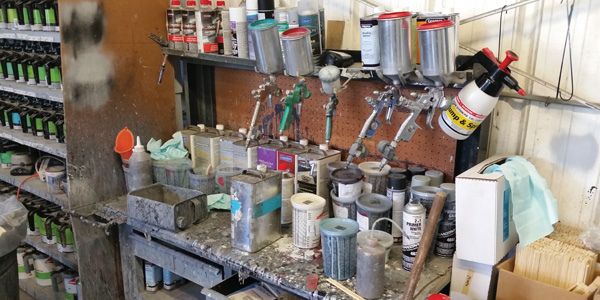
The gun itself may either be dirty on the outside, which is obvious, or dirty on the inside, which isn’t so obvious. We can make a determination on a gun’s inner cleanliness with a bit of detective work: Does the spray gun get put inside a gun-cleaning machine or an open “bird-bath” for cleaning? Is the condition of the cleaning solvent pristine or is it at all dirty? Has the gun started spraying poorly, such as with metallic control? If dirty solvent enters the air passages of the spray gun and isn’t immediately rinsed out with fresh thinner, it will leave a thin film. Over time, this film will build up until the air passages are restricted and the air pressure increases, similar to how putting your thumb over a water hose increases the velocity of the water coming out. This increase in velocity can dislodge bits of that accumulated dirt-film and deposit it into your paint job.
The Painter
Is our painter “prepped for surgery,” so to speak? Is he conscientiously cleaning himself prior to donning a clean paint suit? Is the painter’s head covered with anything to prevent dust or hair from leaving him and joining the wet paint film? Some of the personal protective equipment (PPE) works as both a protective layer for the painter and an isolating layer for the vehicle, so it’s probably not a good idea to walk around a dusty prep area with a paint suit on.
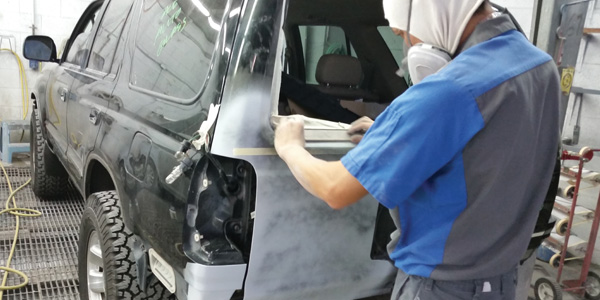
There are those painters out there who enjoy the efficacy of a team of helpers prepping, allowing them to simply paint. However, the vast majority of painters are doing at least some of their own prep work. Does the painter start out fairly clean and proceed to contaminate the job in the booth with poor habits? Does the painter take his paint suit off, between coating applications, or does that take “too much time”? You may be surprised how often that happens.
The Shop
A body and paint shop is normally a pretty dirty place. This is often compounded by a general lack of housekeeping and cleaning. Regular cleaning and organizing will help. Air movement and filtration will reduce the amount of dust floating around in the air, and capturing dust at the point of sanding will help as well. Great options are either a vacuum-sander with a dust bag attached, or one of the sanding stations that incorporate a vacuum right into the design, making them self-contained dust management systems. Arresting the airborne dust to begin with will pay multiple dividends later by simply making it less of an issue to deal with – for painting and breathing considerations.
Acts of God
While not catastrophic (well, perhaps to the painter it is), there are situations that defy predictability and therefore cannot be prevented by the painter. For example, critters. Bugs, gnats and flies. While generally we know when they’ve gotten in the booth and can take steps to remove them, there are scenarios where we’ve done all we can and they still show up unannounced, often once the temperature ramps up after hitting the bake cycle. Moths seem particularly good at hiding somewhere within the vehicle’s undercarriage and making an appearance after we’ve finished painting. This is more common in shops that have open bays or simply open doors due to weather, and an early-setting sun. The moths are naturally drawn to the lighted shop and sometimes bee-line it for the vehicle while it’s in prep and are brought into the booth, unbeknownst to anyone. It’s hard to believe the amount of damage a moth can do. If you’ve ever seen a moth that has landed in a freshly cleared panel, then you know what I’m talking about. The moth lands or, more accurately, hits and sticks. Then, it flounders around, attempting to break free from the sticky clear, and all that floundering dislodges the “wing dust” that moths have. A one-inch moth can leave a 12-inch pattern of wing dust, which is most noticeable on dark colors. That’s a repaint.
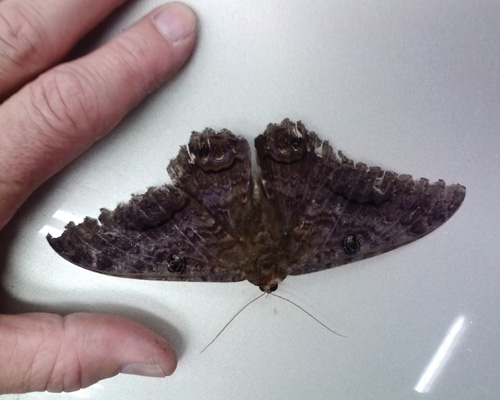
If a fly alights on a freshly painted panel, it’s likely he’ll be found after the bake cycle. And his legs and wings both are so delicate that it’s difficult to remove him completely, whether he’s on his feet or on his back. This is often a repaint.
While painting in the tropics, I’ve seen lizards walk across a fresh panel. Well, I haven’t actually seen the lizard do this – just his tracks as he waltzed on and off the panel during the bake cycle. Depending where these tracks are on the vehicle and the color, you may be able to dab the footsteps with catalyzed clear, sand and polish when dry and maybe save it from a repaint. I suspect most shops don’t have this challenge.
Perhaps the worst act of God I’ve witnessed happened to me in my youth. The booth was in an open stall that had a sturdy roof over it. One rainy evening after finishing a big job, I went home. Upon my return the following morning, I found that the roof had started leaking onto the booth, which in turn leaked onto the vehicle. The water leak hit and splattered, depositing water drops over most of the vehicle. I’m sure most of us have seen the effects of water on fresh paint. That was an unavoidable repaint despite my hopes and prayers as I attempted to “save” it with a cut-and-buff.

